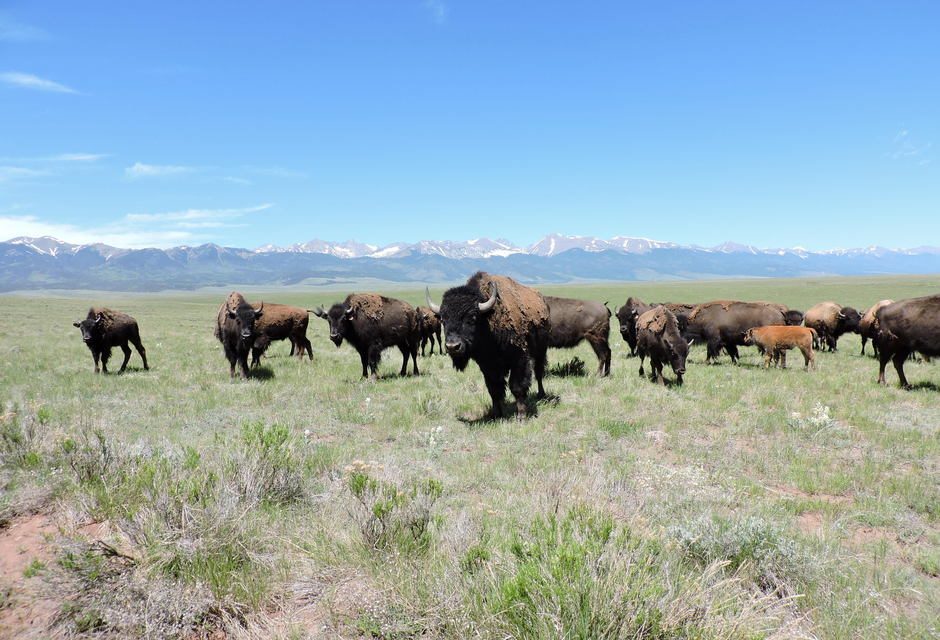1987 was the worst year of my life. A dream job of working on an outdoor magazine was falling apart (with the publication itself), leaving M. and me stuck in a Colorado town that she barely tolerated. Yet we had no money to leave.
I had signed up for the Outdoor Writers Association of America's annual conference, that year held in Kalispell, Montana, and hoping Something Might Turn up, drove up there with M.
At a reception a big, husky guy came up and shook my hand, saying, "Chas? Remember me? We were in Robert Peterson's creative-writing class together at Reed."
I read his nametag. "Tom McIntyre." I sure knew who he was—a rising figure in American outdoor writing, but more than that, someone whose work was grounded in literature as well as "what calibre for [species]?".
That night, lying in the camper next to my sleeping wife, I hit absolute bottom. My journalism-magazine editing-career was taking flak, and the starboard engine was on fire. I had started a master's degree, done the course work, but not yet written my thesis. I was stuck in a one-industry town with no prospects, doing casual work in a friend's greenhouse over in Pueblo, with M. able to find only part-time work herself.
Around 3 a.m. I thought, "It's about time for suicidal thoughts, isn't it? That would be appropriate about now."
But we made our way back to Colorado and got through the summer somehow on unemployment checks. That fall, as the rising sun silhouetted a mule deer buck on Poverty Mountain, I made the shot and dropped him where he stood. When I came home, there was a phone message from the editor of the local newspaper, offering me a job. I had not meant to go back to newspaper work, but I was desperate, and I stayed there three years. Finished that thesis too.
Meanwhile, I was on Tom & Elaine's Christmas card list. When Dad died, Tom bought his Mannlicher-stocked 7 mm Mauser sporter — Dad's saddle gun and everything-big game rifle, something like this one — for his son Bryan, who put it to use.
Tom and I emailed, sharing our mutual love for the weirdness of
George Leonard Herter's books — he collected enough info on Herter for a biography — our shared Reed College stories (such as a fondness for a gritty North Portland bar,
the White Eagle), and writing progress. I offered small edits on bits of his new book,
Thunder without Rain. And now he's gone. November 3, while I was unpacking from my North Dakota trip.
I had been thinking that I should drive up to Sheridan . . . well, too late. Don't put these things off, dear reader.
Someone has written a thoughftul obituary:
Thomas McIntyre, one of America’s renown outdoor writers, died at his
home on
November 3, 2022 in Sheridan. He was 70 years old and died of
natural causes.
He was born in Downey, California on January 23,
1952. Educated by the Jesuits at Loyola High School and Reed College in
Portland, Oregon, Tom was a wildly curious and a well-read individual.
Few things on this mortal coil did not interest him.
As a writer,
he focused on hunting and the outdoors. At age nineteen, he made his
first trip to Africa, developing a life-long affection for the
continent. He returned numerous times over the years. Yet Tom did not
limit his travels to the Sahara and Savannah. He visited every continent
in the world except Antarctica, writing story after story. They
numbered in the hundreds and graced the pages of nearly every outdoor
magazine imaginable: Field and Stream, Sports Afield, Petersen’s
Journal, Outdoor Life, Bugle, Gray’s Sporting Journal, Sporting
Classics, Men’s Journal, Garden and Gun, and the London-based The
Field.
Tom was one of the few writers listed as a contributing
editor for both Sports Afield and Field and Stream. Sporting News and
Carl Zeiss Optics recognized him for his work, awarding him prizes.
He
also wrote prolifically for the screen, creating 750 episodes of
outdoor television programs for Orion Entertainment, including
“Buccaneers and Bones,” — narrated by Tom Brokaw — and the documentary “Wyoming: Predators, Prey, and People” for the Wyoming Game and Fish
Department.
Tom was probably best known for his books. These
include Days Afield, The Way of the Hunter, Dreaming the Lion, Seasons
and Days and Augusts in Africa. In 2012, he published his only work of
fiction, The Snow Leopard, which critics hailed as a minor masterpiece.
Shortly
before his death, he completed what he considered his magnum opus,
Thunder Without Rain, a history of the Cape buffalo. Five years in the
making, publication is scheduled for February 2023.
It would be an
impoverishment to suggest Tom was merely an “outdoor writer.” He
possessed knowledge on an astounding range of subjects. If you wanted to
have a conversation about the vagaries of African big game rifles then,
in the next sentence, delve into the interpretations of a passage from
James Joyce’s Ulysses, Tom McIntyre was your man. He also had an
encyclopedic knowledge of film and not just the Oscar winners, either.
He
relished a dry martini (no olives, please) and good food. In his
travels, he sampled rather unorthodox fare, including musk ox bile in
Greenland. He also savored rigorous conversation. Tom possessed both a
wicked sense of humor and a huge and generous heart. He loved his family
above all. He is survived by his wife Elaine, son Bryan,
daughter-in-law Morgan, brother Robert, many extended family members,
and a tireless English cocker named Mickey.
A memorial service is planned for spring of 2023.
There is more at Steve Bodio's blog, including some old photos and tributes by other writers.










































